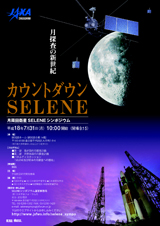Topics List
Oct. 18, 2017 Updated
Detection of intact lunar lava tubes in the data from Kaguya radar sounding
|
The international research team investigated the analysis of the SELENE Lunar Radar Sounder (LRS) data and confirmed that multiple lunar lava tubes exist extending a few to several tens of meters in depth underneath the volcanic region. One floor of the holes extended several tens of kilometers westward of the east end of the lava tube that LRS detected. The results from the LRS data analysis are valuable from science and future exploration perspectives, as they offer evidence for the existence of previously hypothesized subsurface lava tubes. Since the insides of lunar lava tubes are believed to be in pristine state, careful study of the interior provides insight regarding the evolutionary history of the Moon. Intact lava tubes, shielded from the hostile outside environment, offer potential sites for lunar base construction. Though lava tube caves can be buried beneath the holes, few such holes have been discovered. This suggests that underground void is limited which can accommodate the lunar base for science and exploration. |
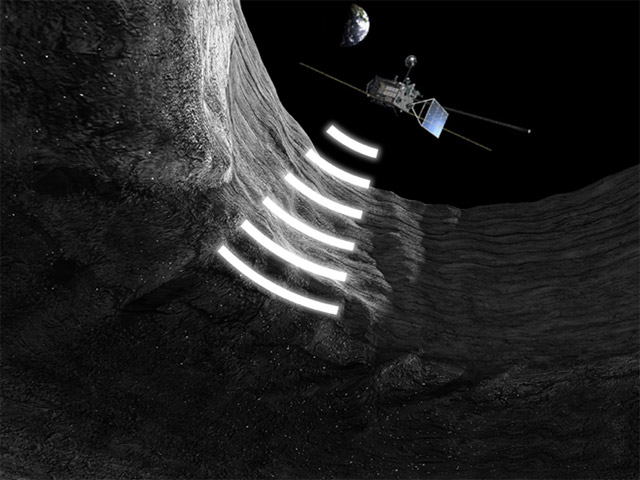
|
|---|
Sep. 26, 2016 Updated
Full release of the SELENE (KAGUYA) High Definition Television (HDTV) data
|
All the data taken by the high definition television (HDTV) onboard the SELENE (KAGUYA) lunar orbiter have been released. The SELENE HDTV, developed in cooperation with JAXA and NHK, captured the full HD images all around the Moon. The raw data, extracted right from more than 600 HD images that the SELENE HDTV acquired over the period of 21 months, are now available as they are of high scientific value.
|
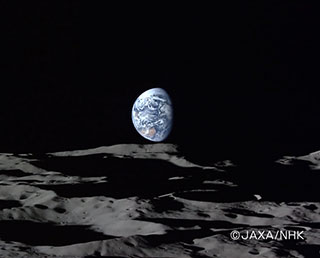
|
|---|
Jul. 5, 2010 Updated
Global distribution of olivine from the lunar interior and its origin revealed by KAGUYA
|
Spectral Profiler onboard on Japanese lunar explorer SELENE/Kaguya revealed the global distribution of olivine on the lunar surface and its origin. This new finding provides us important insight into the Moon’s origin and evolution. This result was published in the British scientific journal "Nature Geosciences" on July 4, 2010. |
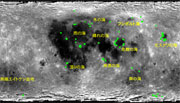
|
|---|
Nov. 2, 2009 Updated
Public release of KAGUYA data
|
JAXA started to provide data acquired by the lunar explorer "KAGUYA" (SELENE) (L2 products) during its regular operation phase (from December 21, 2007, to October 31, 2008) to the public through the Internet. |
 |
|---|
Oct. 9, 2009 Updated
"KAGUYA" provides data to NASA "LCROSS"
|
NASA's Lunar Crater Observation and Sensing Satellite (LCROSS) launched with the Lunar Reconnaissance Orbiter (LRO), a NASA lunar explorer, will impact the Cabeus crater near the Moon's South Pole at 7:31:45 a.m. on October 9 (American Eastern Daylight Time or 8:31:45 p.m. Japan Standard time.) The process of the LCROSS impact is in two stages: firstly, its rocket's stage, which flew with the LCROSS, hits the Moon, then the LCROSS impacts the Moon after observing the rocket stage collision. The twin impacts will be observed by the LRO and ground telescopes. Through these impacts, NASA expects to detect water vapor in a large volume of dust blown up by the impacts. |
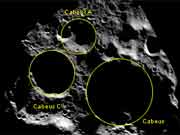 |
|---|
Sep. 10, 2009 Updated
KAGUYA research report published in Nature
|
Results of the Multiband Imager onboard the lunar orbiting satellite "SELENE" (Kaguya) were published in the British science journal "Nature" on September 10 (British Standard Time). As a result of examining the central peaks, walls, and other parts of 69 craters, the Multiband Imager observation instrument team clarified for the first time in the world that anorthosite (*) consisting of nearly 100 percent anorthite is widely distributed in the lunar highland crust. |
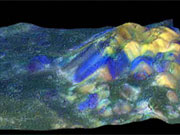 |
|---|
Jul. 22, 2009 Updated
KAGUYA provides data to "Moon in Google Earth"
|
Through collaboration between Google and JAXA, 3D images of the moon's surface can be seen on the "Moon in Google Earth" using data observed by the Laser Altimeter (LALT) and Terrain Camera (TC) of the KAGUYA. In addition, you can also find some images taken by the KAGUYA's high definition television camera from certain points on the moon's surface. |
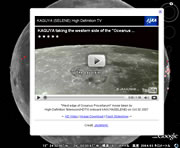 |
|---|
Jun. 30, 2009 Updated
Operation completion of OUNA (VRAD Satellite)
|
The sub-satellite "OUNA" (VRAD Satellite) of the Lunar Explorer "KAGUYA" has continued its calibration data acquisition that was necessary for improving the resolution accuracy for the gravity field after the maneuvered falling of its main satellite KAGUYA on June 11. |
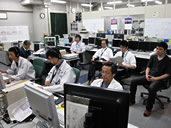 |
|---|
Jun. 19, 2009 Updated
Last shots taken by KAGUYA's HDTV, TC and other camera
|
JAXA released final still images taken by the High Definition Television (HDTV) of the lunar explorer "KAGUYA," which was maneuvered to be dropped onto the Moon's surface on June 11. |
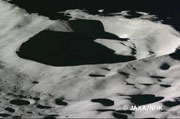 |
|---|
Jun. 11, 2009 Updated
KAGUYA dropped onto Moon's surface
|
The lunar explorer "KAGUYA" was maneuvered to be dropped around 80.4 degrees east longitude and 65.5 degrees south latitude onto the Moon at 3:25 a.m. on June 11 (Japan Standard Time.) The KAGUYA carried out global observations of the Moon for 17 months since its launch on September 14,2007. |
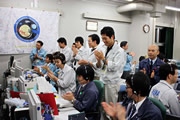 |
|---|
May 21, 2009 Updated
KAGUYA to be dropped onto the moon's surface on June 11 as observations completed
|
The KAGUYA, who carried out its regular operations for about 10 months and post-operational observations for about 7 and half months, is scheduled to be maneuvered to be dropped around 80.4 degrees east longitude and 65.5 degrees south latitude on the moon's front-side surface at 3:25 a.m. on June 11 (Japan Standard Time.) As the KAGUYA's expected landing position is in the shade on the Moon, we many be able to witness some flash from its collision; therefore, we are now informing all related organizations both in Japan and overseas of its falling time and location. |
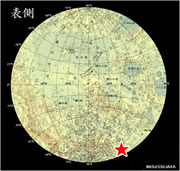 |
|---|
Apr. 8, 2009 Updated
"KAGUYA" to be dropped onto the Moon in June
|
The lunar explorer "KAGUYA," which is now in the post operational phase, has been carrying out observations of the Moon from an altitude of 50 km since February 1, 2009. From now on, it will lower its altitude to 30 km, a Moon perigee, to continue observations. Upon completing observations, the "KATUYA" will be controlled to be dropped on the front side of the Moon around June 10. We are now studying the possibility of holding a public event for the "KAGUYA" in July. |
 |
|---|
Feb. 18, 2009 Updated
"KAGUYA" successfully captured Earth's diamond ring
|
On Feb. 10 (JST), the lunar explorer “KAGUYA” successfully took an image of the moment when the Earth looked like a diamond ring by its onboard high definition camera. The moment came when a penumbral lunar eclipse occurred and the view of the Sun from the KAGUYA was mostly covered by the Earth, thus the earth looked like a diamond ring. This is the first time that this phenomenon was shot from the Moon. (Image: (C) JAXA/NHK) |
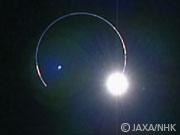 |
|---|
Feb. 13, 2009 Updated
KAGUYA (SELENE) special edition research reports published in Science Magazine
|
Four KAGUYA research reports using observation data from the Terrain Camera onboard the KAGUYA and a perspective titled "Seeing the Missing Half" were published as part of a KAGUYA special edition in Science Magazine dated February 13, 2009. |
 |
|---|
Oct. 9, 2008 Updated
KAGUYA's high vision Camera captures "Full Earth-rise"
|
The lunar explorer "KAGUYA" acquired images of "the full earth rise and set" through its onboard high definition camera on September 30 (Japan Standard Time) following its full earth image shooting in April. Full earth images can be taken only twice a year when the Moon, Earth, Sun and KAGUYA perfectly line up. |
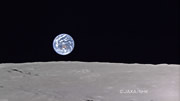 |
|---|
May 20, 2008 Updated
The "halo" area around Apollo 15 landing site observed by Terrain Camera on SELENE(KAGUYA)
|
JAXA reported on the "halo" generated by the Apollo 15 lunar module engine exhaust plume that was detected in the data from Terrain Camera (TC) image. |
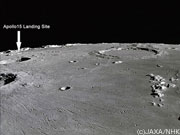 |
|---|
Apr. 16, 2008 Updated
Gravity Anomaly detected by using 4-way Doppler observation data from the RSTAR (OKINA) (RSAT)
|
JAXA announced a new finding of a gravity anomaly for both the near side and far side of the Moon by using 4-way Doppler observation data from the RSTAR (OKINA) with the main orbiter, the KAGUYA. |
 |
|---|
Apr. 11, 2008 Updated
KAGUYA (SELENE) Image Taking of "Full Earth-Rise" by HDTV
|
The lunar explorer KAGUYA initially captured the right-side waned "Earth-rise" in November 2007 with its high-vision camera, but this time, it succeeded in capturing the "Full Earth-rise" without any wane. This is the first time that a high-vision image of the "Full Earth-rise" has been captured from space, 380,000 kilometers away from Earth. |
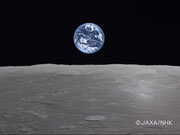 |
|---|
Apr. 9, 2008 Updated
KAGUYA creates topographical map of the Moon 10 times more accurate than before
|
Using the Laser Altimeter (LALT) aboard the Lunar Explorer KAGUYA, JAXA acquired data covering the entire Moon’s surface and produced a topographical map of the Moon in cooperation with the National astronomical Observatory of Japan and the Geographical Survey Institute. |
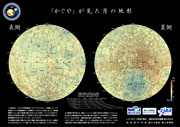 |
|---|
Dec. 21, 2007 Updated
KAGUYA (SELENE): Shifting to Regular Operations
|
The Japan Aerospace Exploration Agency (JAXA) is pleased to announce that the operation mode of the lunar explorer, KAGUYA (SELENE), was shifted to regular operations from its initial verification on December 21, 2007 (Japan Standard Time) as we were able to acquire satisfactory verification results for all fifteen observation missions. JAXA had been conducting an initial functional verification of the KAGUYA onboard equipment for about two months since the KAGUYA was injected into a lunar orbit at an altitude of about 100 km on Oct 18, 2007. From now on, we will perform observation of the Moon's surface for about ten months to acquire data on "Moon Science" and other studies. |
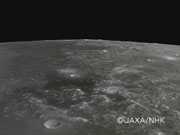 |
|---|
Nov. 28, 2007 Updated
Terrain Camera provides unique 3D images of Moon
|
JAXA has made detailed images of the Moon’s surface using observation data acquired by the Terrain Camera (TC) onboard the KAGUYA. In a global first, JAXA composed three-dimensional images and a moving image with a very high aerial resolution of 10 meters. The images include the Polar areas on the Moon. Moving Image (480 x 270pixels) |
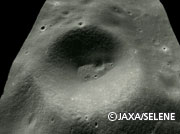 |
|---|
Nov. 13, 2007 Updated
'Earth-rise' and 'Earth-set' images were taken by the KAGUYA
|
The onboard high definition camera of the moon explorer "KAGUYA," which is under initial functional verification, successfully acquired the world’s first high definition images of an "Earth-rise" and "Earth-set." It was also the world’s first HD images of the Earth from about 380,000 km away in space. |
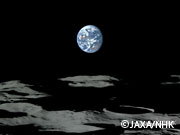 |
|---|
Nov. 12, 2007 Updated
KAGUYA and OKINA successfully observed the gravity field of the Moon's backside
|
On Nov. 6 (Japan Standard Time), a direct observation test of the gravity field on the backside of the Moon was carried out using the “KAGUYA”, which entered the Moon’s orbit (at about an altitude of 100 km), and the “OKINA (Relay Satellite),” which traveled in the Moon’s oblong orbit (at an altitude of 2,400 km x 100 km.) |
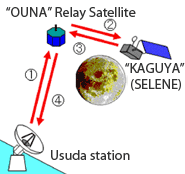 |
|---|
Nov. 7, 2007 Updated
KAGUYA successfully takes images of the moon using HDTV camera!
|
The "KAGUYA," which is currently undergoing initial functional verification, successfully acquired image data using its onboard high definition TV camera (HDTV). |
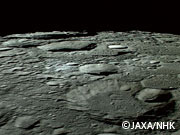 |
|---|
Oct. 31, 2007 Updated
KAGUYA deployed LMAG mast and LRS antennas
|
The "KAGUYA" (SELENE,) flying around the moon, successfully extended the Lunar Magnetometer (LMAG) mast and Lunar Radar Sounder (LRS) antennas, and deployed the Upper Atmosphere and Plasma Imager (UPI.) |
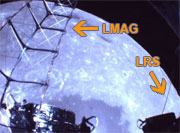 |
|---|
Oct. 21, 2007 Updated
"KAGUYA" moves to regular control mode
|
The lunar explorer “KAGUYA” (SELENE), which successfully separated its two baby satellites, has been shifted to the regular control mode to observe the Moon's surface by having the observation equipment face the moon at all times. |
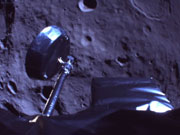 |
|---|
Oct. 12, 2007 Updated
KAGUYA releases VRAD satellite
"OKINA" and "OUNA" were selected as the nicknames
|
The lunar explorer "KAGUYA" (SELENE) released one of its onboard baby satellites, the VRAD satellite, at 1:28 p.m. on Oct. 12 (Japan Standard Time.) |
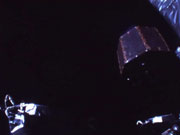 |
|---|
Oct. 9, 2007 Updated
KAGUYA took images of the Moon and released the Rstar
|
On October 9, the lunar explorer "KAGUYA" (SELENE) released one of its onboard baby satellites, the Relay satellite (Rstar,) at 9:36 a.m. |
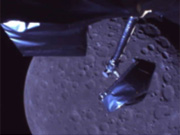 |
|---|
Oct. 5, 2007 Updated
KAGUYA (SELENE) Lunar Orbit Injection was confirmed
|
JAXA performed the lunar orbit injection maneuver (LOI1) for the "KAGUYA" (SELENE) at 6:20 a.m. on October 4, 2007 (Japan Standard Time, JST) and have confirmed that the KAGUYA was injected into the lunar orbit. |
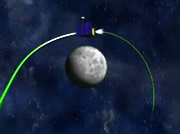 |
|---|
Oct. 1, 2007 Updated
Lunar Explorer KAGUYA (SELENE)
Successful Image Taking by the High Definition Television (HDTV)
|
JAXA and NHK (Japan Broadcasting Corporation) have successfully taken high definition moving images through the KAGUYA (SELENE) for the first time. |
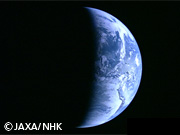 |
|---|
Sep. 14, 2007 Updated
Launch Result of the KAGUYA (SELENE) by the H-IIA Launch Vehicle No. 13 (H-IIA F13)
|
Mitsubishi Heavy Industries, Ltd. and the Japan Aerospace Exploration Agency (JAXA) launched the Lunar Orbit Explorer "KAGUYA" (SELENE) by the H-IIA Launch Vehicle No. 13 (H-IIA F13) at 10:31:01 a.m. on September 14, 2007 (Japan Standard Time, JST) from the Tanegashima Space Center. |
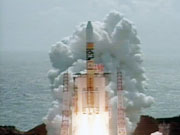 |
|---|
Sep. 11, 2007 Updated
Launch Postponement of the KAGUYA(SELENE) / H-IIA F13
|
Mitsubishi Heavy Industries, Ltd. and the Japan Aerospace Exploration Agency would like to announce that we have decided to postpone the launch of the Lunar Orbit Explorer "KAGUYA" (SELENE) by H-IIA Launch Vehicle No. 13 (H-IIA F13) as adverse weather conditions are expected during the scheduled countdown operations starting from one day prior to the launch day. |
 |
|---|
Aug. 15, 2007 Updated
New Launch day of "KAGUYA"
|
The launch of the Lunar Orbit Explorer "KAGUYA" (SELENE) by H-IIA Launch Vehicle No. 13 (H-IIA F13) was rescheduled for 10:35:47 a.m. on September 13 (THU), 2007 (Japan Standard Time) after replacement work of parts in the two onboard baby satellites of the "KAGUYA" was successfully completed. We plan to broadcast a live launch report on the launch day. Please enjoy it. |
 |
|---|
Jul. 20, 2007 Updated
Launch Postponement of the KAGUYA (SELENE)
|
Mitsubishi Heavy Industries, Ltd. and the Japan Aerospace Exploration Agency would like to announce that we decided to postpone the launch of the Lunar Orbit Explorer "KAGUYA" (SELENE) by the H-IIA Launch Vehicle No. 13 (H-IIA F13.) |
|
|---|
Jun. 18, 2007 Updated
"KAGUYA" (SELENE) debuts at Tanegashima
|
On June 18, 2007, the lunar explorer “KAGUYA” (SELENE) was introduced to the media at the Second Spacecraft Test and Assembly Building at Tanegashima Space Center. |
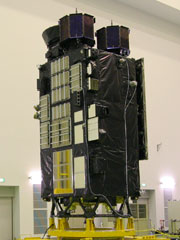 |
|---|
Jun. 13, 2007 Updated
Launch day is set! Special site is open!
|
The launch day and time of the lunar explorer "KAGUYA" (SELENE) and the "H-IIA Launch Vehicle No. 13" is set at 9:30:48 a.m. on August 16, 2007. We have opened a Special Web Site for the launch. We will carry the latest news on the "KAGUYA" and the "H-IIA Launch Vehicle No. 13" on these special web pages, so please check them regularly. |
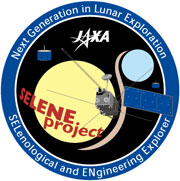 |
|---|
Jun. 6, 2007 Updated
"KAGUYA" selected as SELENE's nickname!
|
The nickname for the lunar explorer SELENE, which was solicited from the general public, has been selected as the "KAGUYA." We appreciate the many applications we received. |
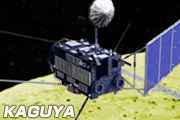 |
|---|
Dec. 1, 2006 Updated
SELENE "WISH UPON THE MOON" Campaign
|
JAXA invites you to send your name and message to be delivered to the Moon. The campaign aims to make people feel more familiar with the Selenological and Engineering Explorer (or Moon explorer) "SELENE" project. Your names and messages will be delivered to the Moon on the "SELENE." |
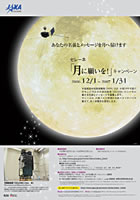 |
|---|
Oct. 16, 2006 Updated
Lunar exploration satellite "SELENE" make its appearance
|
On Oct. 13, the lunar exploration satellite, Selenological Engineering Explorer (SELENE), introduced itself to the public at the Tsukuba Space Center. The SELENE is 2.1 meters both in length and width, 4.8 meters in height, and three tons in weight including its two sub-satellites (each of which is about 50 kg.) The satellite is scheduled to be launched by an H-IIA launch vehicle from the Tanegashima Space Center in the summer of next year. It then will circulate on a lunar orbit 100 km above the moon for a year to elucidate the mystery of the lunar origin and development by observing the distribution of elements and minerals on the surface of the moon, its geographical features, surface structure, and gravity and magnetic fields in details. |
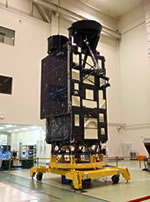 |
|---|
Jun. 9, 2006 Updated
Symposium entitled "Countdown SELENE - New Generation in Lunar Exploration-" to be held
|
We are going to have a symposium called "Countdown SELENE ?New Generation in Lunar Exploration-" at Keidanren Hall in Otemachi, Tokyo, on July 31. At the symposium, we will give not only a detailed explanation of the SELENE mission but also report on the preparation status of the launch, which is scheduled in a year, as well as discuss future lunar exploration and utilization plans. Some representatives of overseas space organizations will lecture on the latest lunar exploration projects. In addition, we plan to have a panel discussion inviting specialists in various areas including a planet scientist, astronomer, novelist, ceramic artist, and engineer. We are hoping to inform as many people as possible about the SELENE mission, which is a lunar orbiting satellite for exploring the origin and development of the moon, as well as show JAXA? commitment to future moon probes. Please join us. |
Apr. 1, 2005 Updated
Satellite system proto-flight test starts
|
The SELENE team has been carrying out a satellite system proto-flight test since February 2005 at the Spacecraft Integration and Test Building (SITE). Currently, electric functions are being tested as installation of the onboard equipment onto the satellite structure panels progresses. After completing all onboard equipment installations, we will move onto a satellite integration test. Photo 1: System proto-flight testing Photo 2: Mission equipment (the antenna part of the Lunar Radar Sounder) Photo 3: Mission equipment (High Definition Television Camera) |
 Photo 1 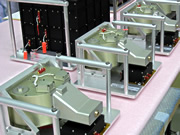 Photo 2 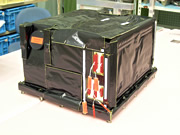 Photo 3 |
|---|
Feb. 15, 2005 Updated
Unit environment tests are underway to prepare for system PFT
|
The SELENE project team is currently performing unit by unit performance and environment tests on each onboard device in preparation for the system proto flight test (PFT). The tests are to evaluate and verify if the satellite system can endure the flight environment, such as vibrations or noise at the time of liftoff, as well as heat and vacuum conditions in space in order to function properly. For this purpose, we are using a test facility that can simulate the space environment at the Spacecraft Integration and Test Building (SITE) at the Tsukuba Space Center. In this report, we would like to inform you of the test results on two small satellites that compose the SELENE, and the High Gain Antenna for sending moon observation data to the Earth. - In Oct., 2004, an acoustic test on the Rstar was held at the acoustic test facility at the SITE. (Photo 3) |
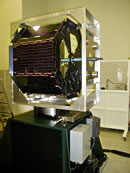 (Photo:1) 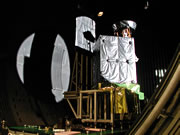 (Photo:2) 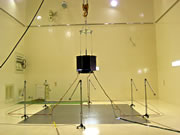 (Photo:3) |
|---|
Feb. 8, 2005 Updated
System test completed on the lunar orbiter
|
A system test on the moon orbiter was conducted between August 2003 and March 2004 at the Spacecraft Integration and Test Building (SITE) at the Tsukuba Space Center. The moon orbiter is the core satellite of the three satellites that compose the SELENE. |
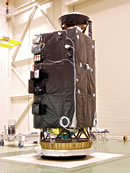 |
|---|
Feb. 9, 2004 Updated
Moon Symposium
|
A symposium called "Potential of space development on the moon and Japan" was held on January 23 at Keidanren Hall in Tokyo. 470 seats of the hall was not enough, and many people participated standing. We reaffirm people's high interest toward moon probing. Current and future world and Japanese moon exploration plans were introduced at the symposium, and participants actively discussed the future plans at the panel discussion not only from the technological point of view, but also based on economic and cultural prospects. |
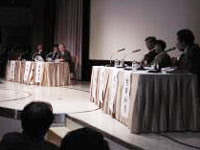 |
|---|
Oct. 28, 2002 Updated
Test underway on SELENE's Thermal Test Model
|
A Thermal Vacuum Test is being conducted on the Thermal Test Model (TTM) of the SELENE at the Spacecraft Integration and Test Building of the Tsukuba Space Center since mid October, 2002. |
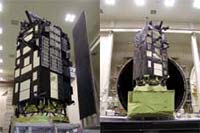 |
|---|
Jun. 28, 2002 Updated
An exhibition of the SELENE Project was held at "The 2002 Japan Earth and Planetary Science Joint Meeting."
|
At the end of May, 2002, an exhibition of the SELENE project was held during "The 2002 Japan Earth and Planetary Science Joint Meeting" held at the National Olympics Memorial Youth Center in Yoyogi, Tokyo. |
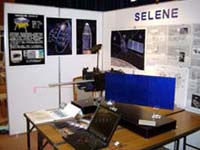 |
|---|
Apr. 2, 2002 Updated
A vibration test on-board Laser Altimeter was conducted.
|
In late February 2002, a vibration test on-board Laser Altimeter was conducted. |
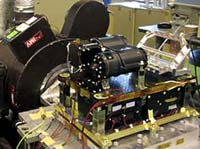 |
|---|
Jan. 28, 2002 Updated
SELENE Mechanical Test Model (MTM) undergoing tests!!
|
Since October 2001, examinations on the SELENE (SELenological and ENgineering Explorer) MTM have been carried out at the Spacecraft Integration and Test Building at the Tsukuba Space Center. |
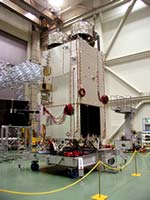 |
|---|
Oct. 16, 2001 Updated
Tests conducted on SELENE's on-board small satellites
|
Tests for the Mechanical Test Models (MTMs) of SELENE's on-board relay satellite (Rstar) and Very Long Baseline Interferometer (VLBI) radio source satellite (Vstar) were conducted at Tsukuba Space Center between August and September 2001. During these tests, MTMs almost identical to their Flight Models' structure (FMs) were used to examine these satellites' structural characteristics and the environmental endurance when they are loaded on a rocket. The data from these examinations will be evaluated and reflected in the flight model designs. |
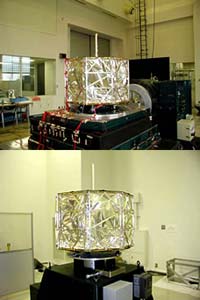 |
|---|
Sep. 4, 2001 Updated
SELENE-B symposium was held
|
On July 17 2001, a SELENE-B symposium was held at The Institute of Space and Astronautical Science (ISAS). At first, SELENE was planned to have two missions of the observation on the Moon orbiter and the soft-landing experiment. The plan was modified to separate the soft-landing experiment on purpose of conducting more accumulated development in 1999. SELENE-B is planned to conduct this landing experiment mainly. |
 |
|---|
Jul. 25, 2001 Updated
Total Dose Radiation Test for Spectral Profiler and Laser ALTimeter
|
On early July in 2001, the total dose radiation test was conducted for the test model of mission instruments (Spectral Profiler and Laser ALTimeter), which would be embarked on SELENE. This test aimed at acquiring the degree how much the sensor and materials of the onboard mission instruments would be degraded in space radiation environment. This result will be reflected in designing the flight model. |
Jun. 23, 2000 Updated
|
With corporation of STA NAL, SELENE project is conducting Flying Test Bed (FTB) at Taikicho in Hokkaido, Japan to acquire basic technology concerned with lunar landing. FTB Captive Tether Test, (the test conducted by FTB suspended using a crane for the purpose of safety) which has been stopped being tested since March 28, 2000, started the test again from June 12 and we have finished its first Tether Test successfully. |
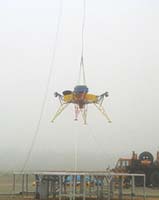 |
|---|
Nov. 19, 1999 Updated
|
In SELENE project, we conducted the element test on landing gear. |
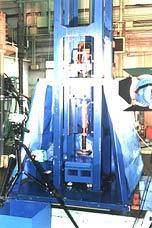 |
|---|
Oct. 15, 1999 Updated
|
In SELENE project, we conducted the element test on landing gear. The landing gear is very important part for its function in absorbing shock, which occurs in its soft landing on the lunar surface. In present test, we were able to obtain detailed data on the characteristic of this absorbing material, alumi-honeycomb core. This result will be reflected to the design of landing gear of SELENE. |
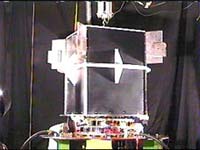 |
|---|
Jul. 26, 1999 Updated
|
Series:Explanation for SELENE Instruments |
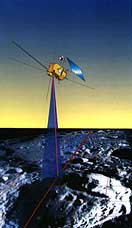 |
|---|
